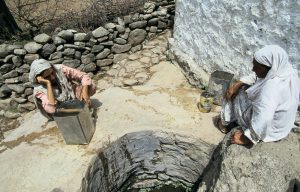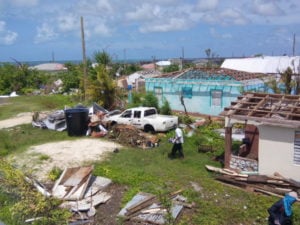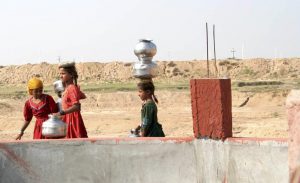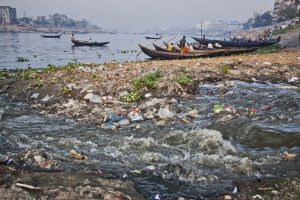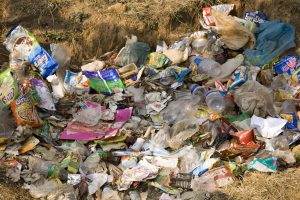Srinagar, the summer capital of the Himalayan state of Jammu & Kashmir, sits among a vast network of lakes and wetlands. Unfortunately despite its water wealth the growing population and the mismanagement of waste has resulted in grave environmental challenges, underlining the need for an urgent and comprehensive waste management strategy for this beautiful city.
Srinagar has grown dramatically in terms of population and area in recent years – with the city ranked as one of the 100 fastest growing urban areas in the world. Srinagar Metropolitan Region has a population of 1.7 million according to the 2011 census. A study carried out by researchers from Kashmir University said that Srinagar has grown 12 times in terms of population and 23 times in terms of area between 1901 and 2011.
This pressure, combined with poor management practices, has led to indiscriminate dumping of waste, polluting the city’s water resources and threatening the region’s tourism industry, which thrives on the landscape of stunning lakes and mountain resorts.
Broken system
A big problem is that there is no proper system to collect and sort waste in the city. Official records at Srinagar Municipal Corporation (SMC) show that a total of 450 metric tonnes of waste is generated per day in Srinagar – 62% of which is organic waste, while the rest is inorganic including around 7% of plastic waste. Riyaz Ahmad Wani, the commissioner of SMC, said that the city generates even more waste in summer because of the tourist footfall.
Only 30% of households store waste, according to the SMC, while the rest dispose waste at public container bins or open dumping points. There are more than 520 open dumping points across the city according to official documents.
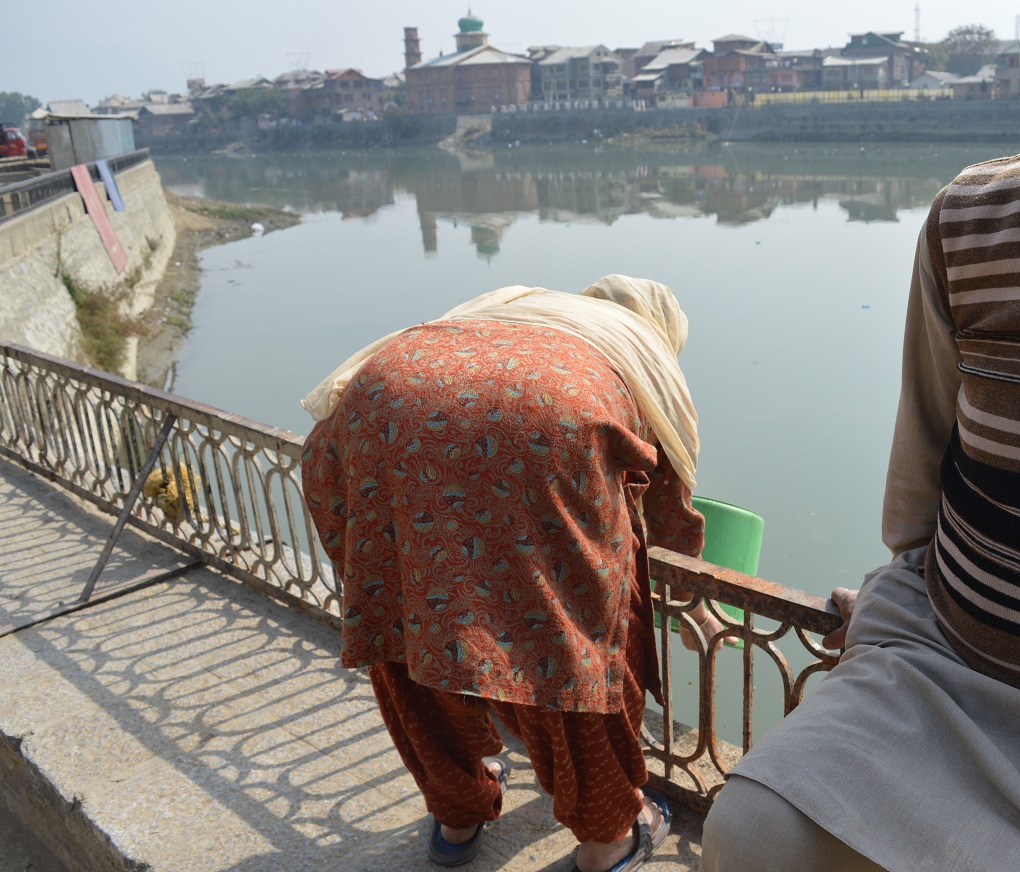
“Residents in some neighbourhoods report that they have never received waste collection. Households in these areas tend to dispose of waste in communal makeshift dump sites in their neighbourhoods, from where municipal waste is collected. In other areas with no makeshift sites, waste is typically burnt or dumped anywhere that is convenient and unattended,” the report said.
The municipality, the report pointed out, also does not require households to segregate rubbish at source in order to capture materials that can be recycled. “Collection rounds typically take place twice a week, though residents informed that this service is not always regular,” the report added.
Wani, however, claims that things have improved recently and SMC’s collection efficiency has “improved up to 90%”.
Leaky landfill
The solid waste that is collected is taken to Srinagar’s only landfill site at Achen in the north-western part of the city, where waste is not properly dealt with. Wani told thethirdpole.net that SMC has installed a mechanical segregator at the site to sort the waste. But this equipment only tackles about a third of the 100 to 150 metric tonnes of waste because of power and man-power shortages, Wani said.
“We are looking into how we can fix that; one of the things we are considering is to outsource the processing of waste,” he added.
After segregation the waste is treated and SMC gets compost and refuse-derived fuel, which they plan to sell to the region’s agriculture department and cement plant owners, as has been done in other Indian cities such as Bangalore and Raipur, said Wani.
The remaining 300 to 350 metric tonnes of waste goes directly into the landfill. “We have capped the landfill properly put a layer under it so that the leachate doesn’t go into the ground,” Wani told thethirdpole.net.
However, a senior engineer who has worked in SMC said that the leachate treatment plant is not functioning properly and has far less capacity than required. This means untreated waste seeps into lakes and ground water, polluting the major source of water supply to Srinagar.
Legal action
Srinagar’s waste problem has got so big that the National Green Tribunal, India’s top environmental court, has had to intervene. The court has issued several orders to the Jammu & Kashmir state government since 2013 asking it to convert the waste of Srinagar city at the Achen landfill into energy to deal with the vast expanse of rubbish. This rubbish poses a serious health hazard for the nearly 80,000 people who live around the site and an environmental threat for the entire area, according to evidence submitted to the NGT.
The SMC commissioner said that a plant is being set up at the landfill site for converting the waste into energy. However, the NGT has repeatedly issued these orders to Jammu and Kashmir government in response to an application at the Tribunal wherein “the applicant [Dr Irfan Ahmad and others] has brought to our notice that the municipal solid waste is scattered all over the city till today. There is no proper mechanism in place for collection, segregation, transportation and dumping of the waste.”
According to Wani, the SMC has plans to sort out the problem in the near future. It is introducing waste collection carriers with different chambers in the city to collect the waste in segregated bins across the city and involve NGOs to ensure 100% door to door collection, he explained.
“We are planning to end the entire backlog of waste which has piled up at Achen landfill for the past 20 years partly through SMC budget and partly through corporate social responsibility following a proper EIA,” he said. They are also planning to decentralise the solid waste treatment facilities by placing separate treatment facilities across the city and asking hotels to install their own waste treatment plants. SMC is even thinking of putting small manure-making machines in public places like amusement parks to convert rubbish into manure.
Water pollution
However, these solutions seem small in the face of the growing tide of waste polluting Srinagar’s water bodies including its famous Dal Lake.
Read also: The disappearing water bodies of Kashmir
Last September, a division bench of the high court of Jammu & Kashmir said the disposal of solid waste into Dal Lake was “disgraceful,” and observed that heaps of garbage, including innards from slaughtered animals, were being dumped into Dal Lake.
The boatmen (shikara wallas) who ferry tourists around Dal Lake said they have to avoid the most polluted sites. “If we go near those areas that look like garbage dumping sites no one would ever want to visit the lake,” said Nazir Ahmad, a shikara walla.
“Most of the damage to our water bodies has been caused by liquid and solid waste pollution,” said Manzoor Wangnoo, the chairman of a local NGO Nageen Lake Conservation Organisation. He added that Anchar Lake has already been lost because of pollution.
Khushhal Sar, a water body in the old Srinagar city which once connected Dal Lake and Anchar Lake and supports biodiversity and the livelihoods of hundreds of families, is now at the brink of collapse because of massive pollution and land encroachments.
Solid waste like plastic and sewage from around 50% of the city ends up in Khushal Sar, said residents of Zadibal and other areas in the vicinity. Rubbish, mostly plastic bags, are often seen floating in the Jhelum river.
Wangnoo suggested that a combination of strong political will, peoples’ participation, and technical support from reputed waste management consultancies could help clear the solid and liquid waste that has devastated Kashmir’s water bodies and continues to pose a serious threat to the natural heritage and tourism industry of Kashmir.
The unsung waste pickers
Apart from collecting plastic and other recyclable waste from the streets of Srinagar city, rag-pickers sift through the waste at the SMC’s landfill. Rag-pickers also buy recyclable waste from the households and later sell it to scrap dealers.
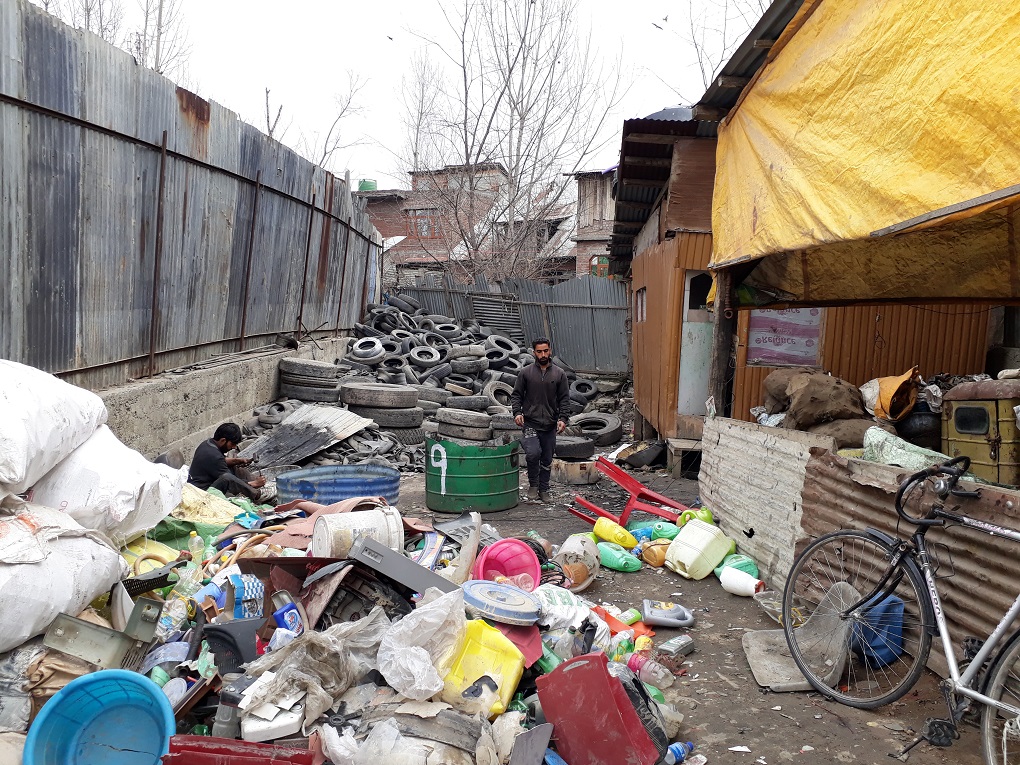
A large number of people, often from the poorest rungs of society, make a living from collecting recyclable materials from households and businesses all over the city, said the Green Kashmir report. This system serves an important environmental and socio-economic function for the city’s poorest.
This correspondent talked to a number of rag pickers and scrap dealers in Srinagar. Rashid, a rag-picker from West Bengal makes around INR 500 (USD 8) a day from scrap collecting. While getting his collection of scrap weighed at a dealers shop at Pantha Chowk in south Srinagar he said, “I wake up when everybody is sleeping and set out to collect scrap. We are often chased by dogs because dogs mostly stay around the garbage heaps.”
The scrap dealers not only support their own families, but also provide work for other people who use the recyclable items. “While we make a living, we also rid the earth from plastic in the process. We are happy that we are making a living while serving the society,” said Nazir Ahmad whose scrap-shop in Bemina-Srinagar takes scrap from 12 street hawkers.
This informal system of recycling operates with little or no support from the municipality and removes the need for the type of complex waste collection, segregation and transport infrastructure common in other parts of the world, the Green Kashmir report observed.
Since the informal recycling sector provides a vital public service, the report recommended that the municipality support its economic viability and provide greater financial security to the substantive numbers of casual labourers employed in the sector.
“Incentivize rag pickers to reach out to neighbourhoods that are presently not visited. The municipality needs to identify the exact scope of collections at present in order to understand gaps in coverage,” the Green Kashmir report suggested.
Stray dog menace
An associated menace has been roiling Kashmiri society over the last few years, with waste piling up on Srinagar’s streets supporting a growing population of stray dogs. Frequent incidents of dog-bites have become a serious medical and public issue for people living in Srinagar. According to statistics provided by the health ministry of the Jammu & Kashmir government early this year in the state assembly, as many as 5,060 dog-bite cases were reported at the anti-rabies clinic of Srinagar’s Shri Maharaja Hari Sigh (SMHS) hospital in 2017.
The health ministry further revealed that 30,711 people were bitten by dogs in Srinagar from 2012 to 2017. “Children under ten represent the high-risk group for dog attacks leading to alarming increase in anxiety disorders among children and this directly or indirectly influences the quality of life of the Kashmir population,” a recent research paper on dog-bites in Srinagar noted, adding that eight people died from rabies between April 2010 to May 2013 in Srinagar.
In every which way, from direct harm to the pollution of the water supply, to the destruction of its beauty – and thus its tourist trade – Srinagar’s garbage problem is chocking its residents.
![<p>Solid waste – including plastic refuse – in Khushal Sar, a dying water body in Srinagar [image by: Athar Parvaiz]</p>](https://dialogue.earth/content/uploads/2018/04/Soild-waste-including-plastic-refuse-in-Khushal-Sar-a-dying-water-body-in-Srinagar-Photo-Athar-Parvaiz.jpg)

